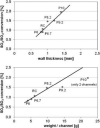Recent trends in vanadium-based SCR catalysts for NOx reduction in industrial applications: stationary sources
- PMID: 36401645
- PMCID: PMC9675887
- DOI: 10.1186/s40580-022-00341-7
Recent trends in vanadium-based SCR catalysts for NOx reduction in industrial applications: stationary sources
Abstract
Vanadium-based catalysts have been used for several decades in ammonia-based selective catalytic reduction (NH3-SCR) processes for reducing NOx emissions from various stationary sources (power plants, chemical plants, incinerators, steel mills, etc.) and mobile sources (large ships, automobiles, etc.). Vanadium-based catalysts containing various vanadium species have a high NOx reduction efficiency at temperatures of 350-400 °C, even if the vanadium species are added in small amounts. However, the strengthening of NOx emission regulations has necessitated the development of catalysts with higher NOx reduction efficiencies. Furthermore, there are several different requirements for the catalysts depending on the target industry and application. In general, the composition of SCR catalyst is determined by the components of the fuel and flue gas for a particular application. It is necessary to optimize the catalyst with regard to the reaction temperature, thermal and chemical durability, shape, and other relevant factors. This review comprehensively analyzes the properties that are required for SCR catalysts in different industries and the development strategies of high-performance and low-temperature vanadium-based catalysts. To analyze the recent research trends, the catalysts employed in power plants, incinerators, as well as cement and steel industries, that emit the highest amount of nitrogen oxides, are presented in detail along with their limitations. The recent developments in catalyst composition, structure, dispersion, and side reaction suppression technology to develop a high-efficiency catalyst are also summarized. As the composition of the vanadium-based catalyst depends mostly on the usage in stationary sources, various promoters and supports that improve the catalyst activity and suppress side reactions, along with the studies on the oxidation state of vanadium, are presented. Furthermore, the research trends related to the nano-dispersion of catalytically active materials using various supports, and controlling the side reactions using the structure of shaped catalysts are summarized. The review concludes with a discussion of the development direction and future prospects for high-efficiency SCR catalysts in different industrial fields.
Keywords: Catalyst poisoning; NOx removal efficiency; Selective catalytic reduction; Stationary sources; Vanadium-based catalysts.
© 2022. The Author(s).
Conflict of interest statement
The authors declare that they have no competing interests.
Figures

















References
-
- Seo J, Lim YB, Youn D, Kim JY, Jin HC. Synergistic enhancement of urban haze by nitrate uptake into transported hygroscopic particles in the Asian continental outflow. Atmos. Chem. Phys. 2020;20:7575–7594. doi: 10.5194/acp-20-7575-2020. - DOI
-
- Heck RM. Catalytic abatement of nitrogen oxides–stationary applications. Catal. Today. 1999;53:519–523. doi: 10.1016/S0920-5861(99)00139-X. - DOI
-
- Yu JCC, Nguyen V-H, Lasek J, Chiang S-W, Li DX, Wu JCS. NOx abatement from stationary emission sources by photo-assisted SCR: Lab-scale to pilot-scale studies. Appl. Catal. A. 2016;523:294–303. doi: 10.1016/j.apcata.2016.06.020. - DOI
-
- Asghar U, et al. Review on the progress in emission control technologies for the abatement of CO2, SOx and NOx from fuel combustion. J. Environ. Chem. Eng. 2021 doi: 10.1016/j.jece.2021.106064. - DOI
-
- Tang C, Zhang H, Dong L. Ceria-based catalysts for low-temperature selective catalytic reduction of NO with NH3. Catal. Sci. Technol. 2016;6:1248–1264. doi: 10.1039/C5CY01487E. - DOI
Publication types
Grants and funding
LinkOut - more resources
Full Text Sources
Research Materials
